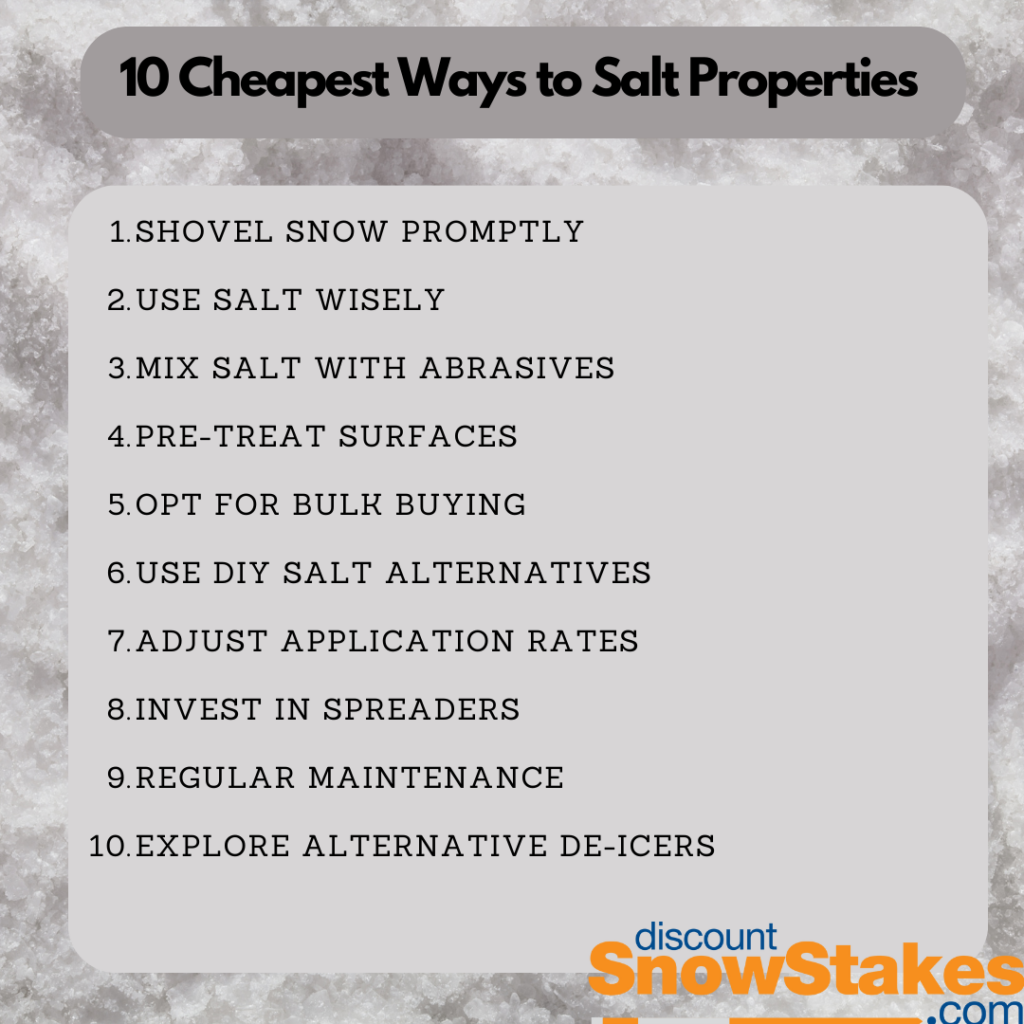Salt is a widely used and effective de-icing agent for properties during winter months. It helps prevent slippery surfaces and enhances safety for pedestrians and vehicles. However, using salt excessively can be expensive and harmful to the environment. In this blog post, we’ll explore ten of the cheapest ways to salt properties effectively while being mindful of costs and environmental impact.
1. Shovel Snow Promptly
One of the simplest and most cost-effective ways to minimize the need for salt is by promptly shoveling snow. Removing snow before it compacts and freezes reduces the amount of ice formation, thus reducing the need for excessive salting.
2. Use Salt Wisely
Instead of scattering salt across large areas, focus on applying it strategically on high-traffic and problematic spots such as entryways, walkways, and driveways. This targeted approach ensures efficient use of salt while still maintaining safety.
3. Mix Salt with Abrasives
Combining salt with abrasives like sand or kitty litter can enhance its effectiveness. The abrasives provide traction, reducing slips and falls, while the salt works to melt the ice. This combination can be more cost-effective than using salt alone.
4. Pre-Treat Surfaces
Applying a thin layer of salt before a snowstorm or freezing rain event can prevent ice from bonding to surfaces. This pre-treatment reduces the amount of salt needed during and after the storm, saving both time and money.
5. Opt for Bulk Purchases
Buying salt in bulk quantities can significantly reduce costs compared to purchasing smaller bags. Consider partnering with neighbors or community groups to buy salt in bulk and share the cost, making it more economical for everyone involved.
6. Use DIY Salt Alternatives
Explore homemade salt alternatives that are budget-friendly and eco-friendly. For example, a mixture of vinegar and water can be sprayed on surfaces to prevent ice formation. Other options include beet juice or pickle brine, which have de-icing properties and are less harmful to the environment than traditional salts.
7. Adjust Application Rates
Pay attention to weather conditions and adjust salt application rates accordingly. In milder temperatures or on less icy surfaces, you can use less salt without compromising safety. This mindful approach helps conserve salt and reduce unnecessary expenses.
8. Invest in Spreaders
Using salt spreaders or sprayers can help distribute salt more evenly and efficiently. These tools ensure that you’re applying the right amount of salt to cover the desired area, avoiding overuse and waste.
9. Regular Maintenance
Keep pathways, gutters, and drainage systems clear to prevent water accumulation and ice formation. Regular maintenance reduces the need for excessive salting and helps prolong the life of surfaces and structures.
10. Explore Alternative De-icers
Consider using alternative de-icing agents such as calcium magnesium acetate (CMA) or potassium chloride. While these options may have a slightly higher upfront cost than traditional salts, they are less damaging to vegetation and infrastructure in the long run, potentially saving money on repairs and replacements.

By implementing these ten cost-effective strategies, property owners can effectively manage ice and snow while minimizing expenses and environmental impact. Balancing safety, affordability, and sustainability ensures a win-win situation for both property owners and the environment during winter months. Those are some of the cheapest ways to salt properties.

